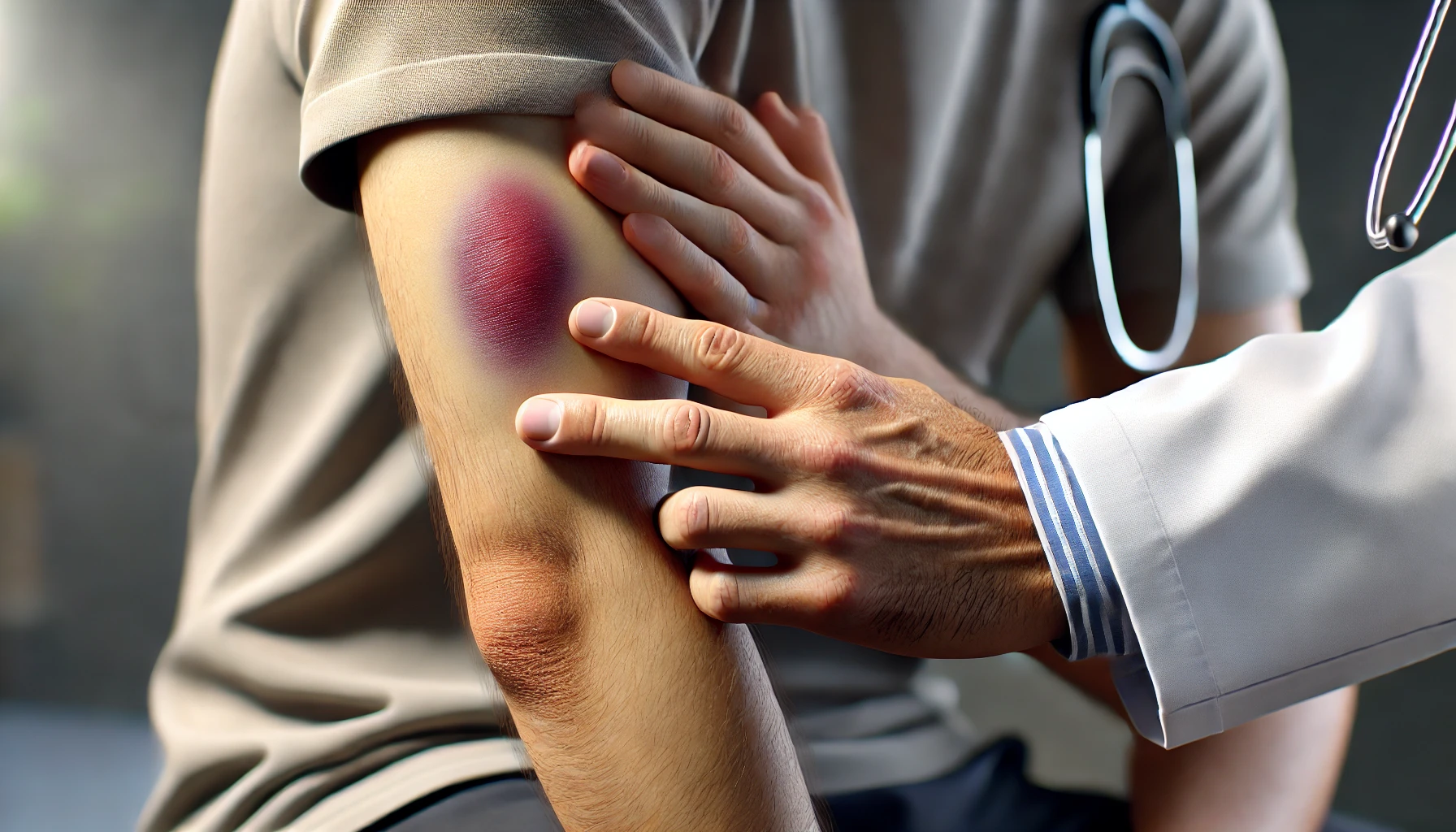This post was written with Consensus AI Academic Search Engine – please read our Disclaimer at the end of this article. Bruising is a common physical manifestation resulting from trauma to the skin and underlying tissues. Understanding the anatomy and development of bruises is crucial for various fields, including forensic science, medical diagnostics, and clinical treatments. This article explores the formation, detection, and factors influencing bruises, drawing on recent research findings.
Formation of Bruises
Bruises, or contusions, occur when small blood vessels under the skin break due to an impact, causing blood to leak into the surrounding tissues. The severity and visibility of a bruise can depend on several factors, including the force of the impact, the location of the injury, and individual physiological differences.
Impact of Force
A study conducted on porcine models demonstrated that the force used to inflict trauma significantly affects the development and characteristics of bruises. The research compared bruises inflicted with low, moderate, and high force over different time intervals (2, 4, 6, and 8 hours). It was found that the visibility and histological changes in bruises varied with the force applied. Higher force resulted in more pronounced infiltration of subcutaneous neutrophils and a greater number of macrophages in muscle tissue, which are useful indicators for age determination of bruises1.
Detection of Bruises
Detecting bruises, especially in forensic cases, can be challenging due to variations in skin color, age, and other factors. Advanced techniques have been developed to improve bruise detection.
Alternate Light Source (ALS)
A randomized controlled trial investigated the effectiveness of using alternate light sources (ALS) within visible and long ultraviolet spectrums to enhance bruise detection compared to white light. The study involved 157 healthy adults and used different wavelength and filter combinations. Results indicated that using 415 nm and 450 nm wavelengths with a yellow filter significantly improved the odds of detecting bruises compared to white light. Additionally, factors such as gender and localized fat influenced bruise detection, with females and individuals with more localized fat showing higher detection rates4.
Factors Influencing Bruise Development
Several factors can influence the development and characteristics of bruises, including the application of cold, topical treatments, and individual physiological differences.
Effect of Cold Application
Research on the effect of local dry cold application on bruising, hematoma, and pain at injection sites found that applying cold before and after injections did not significantly affect the incidence or size of bruises. However, it did reduce the perception of pain among patients2.
Topical Treatments
Another study examined the impact of topical applications of Vitamin K, adrenaline, and aluminum-potassium-sulphate on bruises caused by subcutaneous heparin injections. The results showed that these treatments significantly influenced the size of bruises, with Vitamin K and aluminum-potassium-sulphate reducing bruise size more effectively than adrenaline3.
Conclusion
Understanding the anatomy and development of bruises is essential for accurate diagnosis and treatment in medical and forensic contexts. The force of impact, detection methods, and various treatments can all influence the characteristics and visibility of bruises. Continued research in this field will enhance our ability to assess and manage bruises effectively.
Disclaimer
The content presented in this blog is generated by Consensus, an AI-powered academic search engine, and is based on publicly available scientific literature. While every effort is made to provide accurate, up-to-date, and well-researched information, the content is intended for informational and educational purposes only. It does not constitute medical advice, diagnosis, or treatment. Always consult a qualified healthcare professional before making any decisions regarding medical conditions, treatments, or medications. The AI system’s analysis may not cover all perspectives, emerging research, or individual cases, and it is not a substitute for professional expertise. Neither the blog publisher nor the developers of the AI-powered search engine are responsible for any actions taken based on the information provided in this content. Use of this information is at your own risk. Citations to the original scientific studies are included for reference, but these studies should be reviewed in full and interpreted with the guidance of a healthcare or research professional.
If you are experiencing a medical emergency, please seek immediate attention from a healthcare provider.
